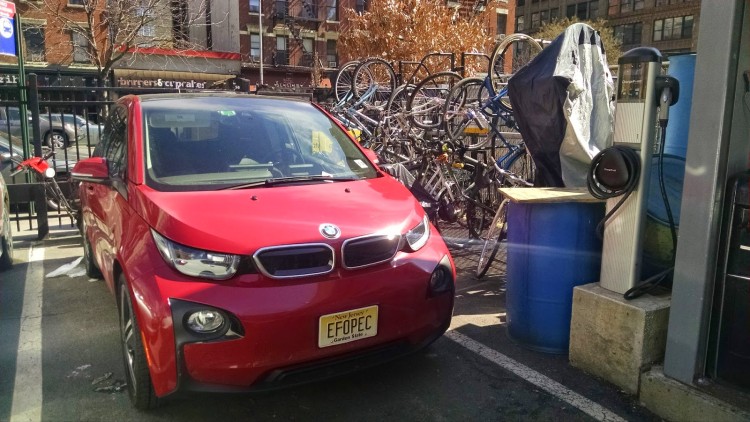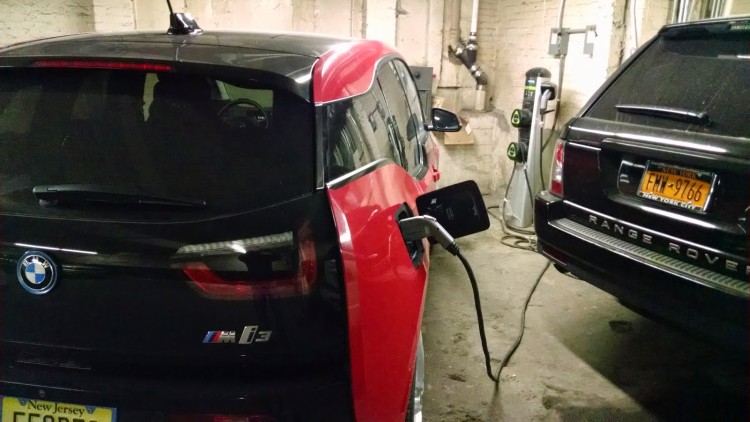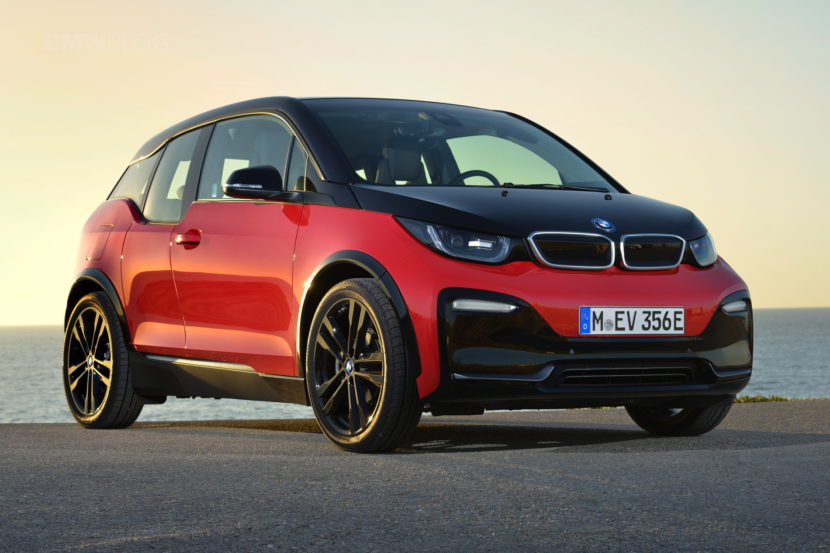Megacity: A metropolitan area with a total population in excess of ten million people.
BMW has all along told us that the i3 was designed for urban transport, a glimpse at the future of personal mobility in the megacities of the world. Heck, the code name for it was even “The Megacity Car.” However now that the i3 has been available for over a year, BMW is realizing that the Megacity car is selling better outside the city limits.
I’ve never really accepted that the i3 would do well in the megacity markets, at least in the US, and I’ve voiced that opinion on many occasions. Having lived with electric cars for the past six years, I’ve had the experience of driving and charging in the both suburbs and in the city, so I’m intimately aware of the challenges of public charging. I live about 50 miles from New York City and go there frequently. Driving my electric cars to and around the city isn’t a problem, however charging it there is. There just aren’t enough places to charge your car there to make living with an EV in New York City palatable. There are public parking garages and a few lots that have EVSEs, but finding one that works is one problem. Then, if you’re lucky enough to find a lot that has one which is working, you often have to fight with the attendant to make sure they plug you in once you’ve left your car there.

The last three times I’ve gone to the City I had nothing but problems getting my car charged. In fact, two of those times I had to drive home using my range extender because the car wasn’t charged. Just last week I went to the New York Auto Show and parked at the 9th Avenue Edison Park Fast lot because it had a ChargePoint charging station. When I pulled in I told the attendant I needed to charge for a minimum of three hours and he seemed to understand what I was saying. He said “Oh this is electric? No problem I’ll plug you in.” I even gave the guy a $5 tip up front with the hopes that he’d take care of me. As I was walking to the Javits Center a few minutes later I checked my BMW i Remote app and saw my car was charging so I figured I was good. I left the car with only 10% state of charge and wanted to be at at least 90% for the trip home, and that would take about three hours of charging. No problem because I planned to be at the show for about six hours. As I was walking back to my car later that day I checked my app just to make sure I was charged and to my surprise I saw I was only at 28% SOC and the car wasn’t charging. When I arrived I asked why my car wasn’t charged and the attendant only said, “We charged it.” I figured maybe they had to move it for some reason, or maybe another EV came that needed to charge but no, someone just decided to unplug it after about 45 minutes of charging. The car was still parked in front of the EVSE, it wasn’t blocking anyone so it hadn’t been moved, it was just unplugged hours ago for no apparent reason.

This has happened before to me in New York City, so I wasn’t really surprised. I’ve even had the attendant promise to plug me in and never do it. I now either wait to watch them plug it in or check my app as I’m walking away to make sure someone plugs it in. Luckily I had the REx to bail me out or I’d have been in a real jam, as I needed to be somewhere else in about an hour.
I could go on and on about previous difficulties I’ve had trying to charge in the city, but I think I’ll dedicate an entire post to that sometime soon. The point here is charging an EV in the city is difficult at best. Yes, if you live there it is possible to make arrangements with the garage where you keep your car, and install an EVSE for your personal use, but many of the garages don’t have the additional electrical capacity for a dedicated 40 amp circuit even if you’re willing to pay for the installation and the electric, so the owners are stuck plugging into a simple 120v outlet and slow charging all of the time. Beam Charging network in New York has stations in various parking garages and offers a $98 per month unlimited charging plan, but you still have to find accessible stations and pay the regular parking fee which can be very expensive. It’s definitely doable, but not very convenient or inexpensive.

So it was no surprise when I read an article this week by Diana Kurylko of the Automotive News quoting BMW NA CEO Ludwig Willisch saying i3 sales have been weaker than expected in large cities like New York: “The strongholds in this country are parts of California, Texas and southern Florida, rather than large cities, he said” The article further says: “The big urban centers in the Northeast, especially New York City, haven’t embraced the i3, Willisch said. Unlike Californians, he said, New Yorkers apparently don’t have sustainability and the environment “at the top of minds.” I don’t think it’s a lack of a desire to be sustainable as much as it’s difficulty charging the car there. California has a much more mature public charging infrastructure, and most people there live in private residences, unlike New York City. Overall, BMW is pleased with US i3 sales, and they are on pace to sell about 12,000 i3s per year here, they just seem to be a little surprised where the sales are coming from. I’m certainly not surprised, and I even wrote a post about a year ago that said the i3 was better suited for suburban and country life than life in the city, and I listed the reasons why I believe that to be true.
Living in the suburbs or the country means you are usually in control of your energy supply, because most people live in single family homes there. There can be issues if you live in an apartment or condo complex, but you also have the choice to move to another location close by if charging is prohibited in the complex you live in. Living in a private residence allows you to install the home charging equipment you need, so you’re not relying on public charging infrastructure as much.
Accessibility to charging is paramount for daily EV life, and in New York the public charging infrastructure has a very long way to go before it becomes convenient enough for many more people to consider an EV if they live there. Life in the big city is tough enough, and fighting on a daily basis for somewhere to charge your car is probably something most New Yorkers aren’t willing to deal with. However there is hope that things will get better. Last year New York City passed the “Charger Ready Bill” which requires all new construction in New York City to dedicate 20% of the new parking spaces for EV charging spaces. I actually was asked by Mayor Bloomberg’s office to testify in front of the committees on buildings and transportation in favor of the bill, which I did. This law will dramatically increase the amount of public charging locations in New York City, but it will take years before the results are really seen.
So are megacities like New York ready for electric cars? Not really. Not yet, I’m afraid.





































































